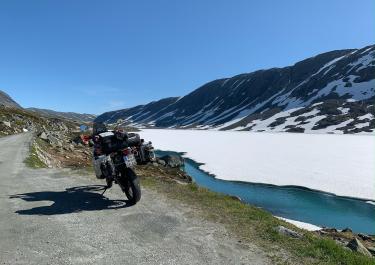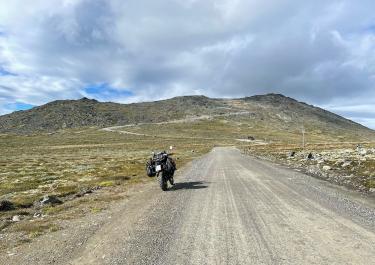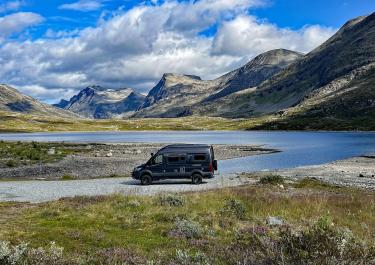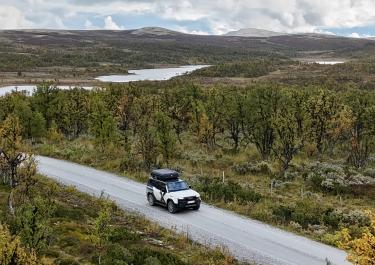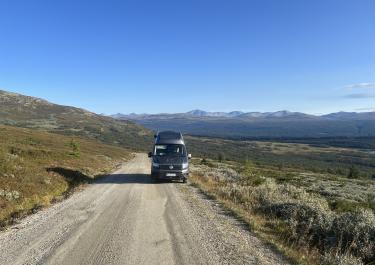Discover Norway off-road: tracks off the beaten track
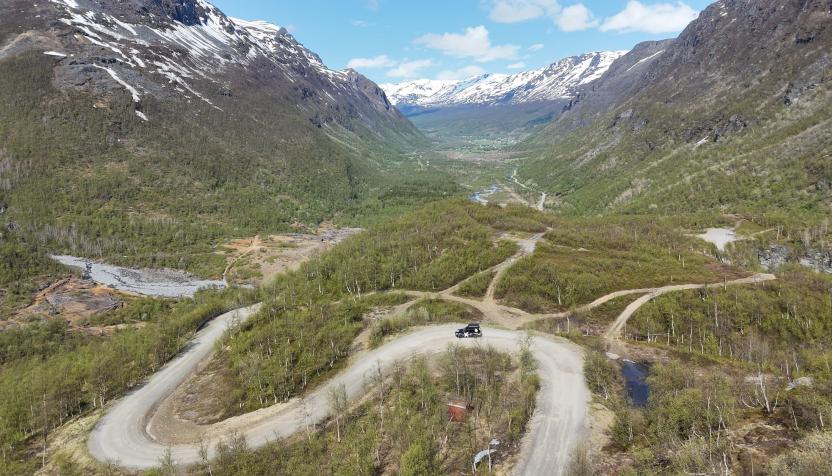
Whoever travels off-road in Norway discovers the pristine Scandinavian landscapes from a new perspective. The easy-to-navigate gravel and dirt roads are mostly toll roads, but they are also in good condition. Most of these private roads are even suitable for large 4x4 vehicles such as off-road trucks.
Do you fancy mountains and forests with moose or musk oxen? If you go off-roading in Jotunheimen or Finnmark, you have a good chance of experiencing them up close. However, our scouts have not spotted any trolls. They seem to have moved to the internet in the meantime. That's better: at least they won't play any tricks on off-road drivers in Norway.
Norway | All offroad routes
Here you will find all legal off-road routes in Norway - clearly listed, with practical filters and map view.
Norway as a destination for off-road travelers
Most off-road vacationers dream of untouched landscapes, wide horizons and exciting nature experiences. But since the latest vacation trend is called "coolcation", Norway has not been spared the effects of tourism. The most famous sights and hotspots can get crowded during the peak travel season. However, if you are out and about in the Norwegian countryside with your touring enduro or 4x4 vehicle, you can experience adventures that are closed to the mainstream.
With its pristine landscapes, numerous fjords and wild mountain landscapes, Norway offers its visitors pure deceleration. But that's not all: most off-road routes in Norway are regularly maintained and are often also suitable for off-road beginners and larger off-road campers. Added to this is the country's well-developed infrastructure. After adventures in the Norwegian wilderness, the comforts of civilization are not far away.
How do I pay the toll in Norway?
The small backroads through the countryside in Norway are mostly private roads. Their owners charge a small fee for the use of these off-road routes, which is usually billed electronically via camera recording. This toll is used to maintain a private road ("Bomveg" in Norwegian). Use by other people's vehicles puts more strain on these gravel roads than if they were only used by their owners.
Our scouts recommend registering with a toll billing provider such as youpark.no before starting an off-road trip through Norway. Alternatively, there are other providers available:
- AutoPASS
- Epass24
- Vintrica
These providers primarily cover the electronic collection of tolls for public roads and some ferries in Norway.
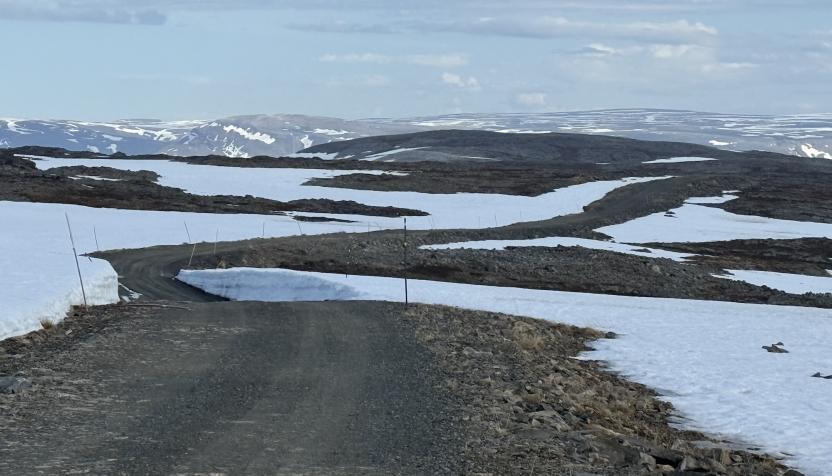
Best time to travel for off-road tours in Norway
In the far north, spring arrives late. In mountain regions such as Jotunheimen, Rondane or Hardangervidda, you can expect the last snow fields at high altitudes to melt towards the beginning of June. If you particularly like the rugged rock faces of the coastal regions and the Norwegian fjords, you can also set off on your off-road trip through Norway in May. However, if you want to get a taste of the mountain air, you should put on a set of good all-terrain tires beforehand.
The off-road season in Norway is relatively short. If you want to explore the mountain regions with their unpaved roads - or perhaps even Lapland - the summer months are best suited for this. As soon as the days get significantly shorter in mid-September, it gets quite cold again in the mornings and evenings. At some point in October, the season for off-road trips to Norway is clearly over: This is when the first snowfalls are expected at high altitudes. But why should you travel north in the fall? After all, we have enough autumn weather of our own in Germany.
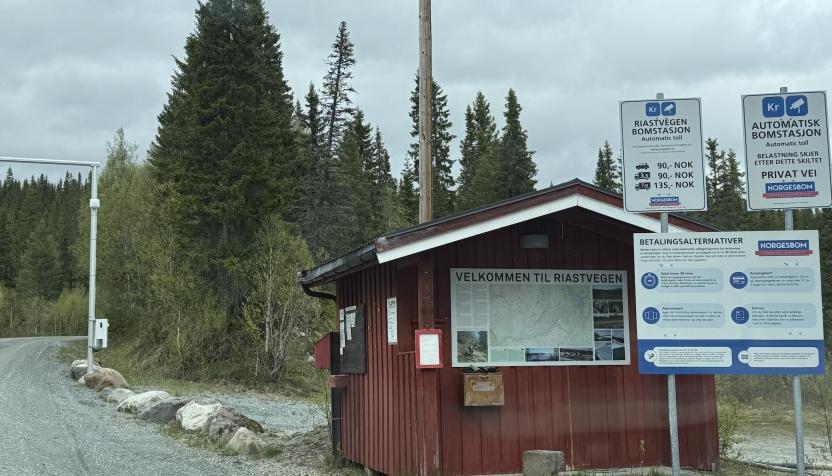
Regulations and laws for off-road driving in Norway
To avoid any misunderstandings here, we should first define what exactly we mean by "off-road driving". The term originally comes from the USA and means "not driving on the road". However, gravel roads and wide dirt tracks are also referred to as "roads" there. So it's actually about driving cross-country. This is strictly prohibited in Norway because it can cause massive damage to ecosystems.
The usual definition of "off-road" here in Germany is driving on unpaved paths and gravel roads. This is legal in Norway on designated routes. Some of these tracks cross private property. They are marked by signs with the words "Bomvei" or "Bomveg". It is often customary here to charge a kind of toll.
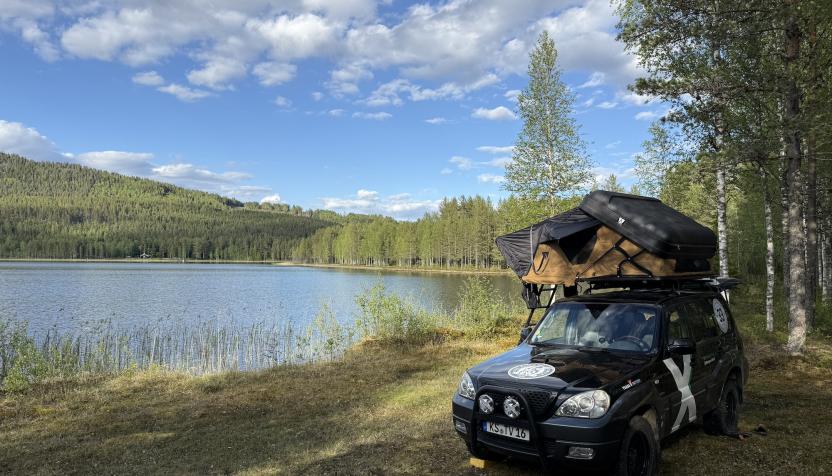
Does the Everyman's Right in Norway also apply to four-wheel drive campers?
The Norwegian Allemansretten (Everyman's Right) allows every hiker or cyclist to move freely through nature and camp there. However, it does not apply to driving motorized vehicles off public roads. Officially, the rule is that an overnight stay in a camper - and even the parking of vehicles - in the Utmark (the great outdoors) is only permitted in specially designated areas.
However, if you keep a minimum distance of 150 meters from inhabited or managed buildings, you may camp wild in Norway for 48 hours in a suitable place next to your slope - but without "setting up camp". Unfortunately, the barbecue, camping chairs and camping table must remain in the car. If you want to stay longer than 48 hours on a pitch in the wild, you should contact the landowner. However, this only applies to populated areas: In the mountains, it is quite unlikely that you will choose a privately owned plot of land to camp on.
In some tourist regions of Fjord Norway or the Lofoten Islands, wild camping has been completely banned during the main tourist season in recent years. Even if you don't make any noise and dispose of your waste correctly, an overnight stay in a camper is a kind of intrusion into nature. Plants are trampled and wild animals are disturbed in their daily routine by the presence of people. This is why the Norwegian authorities require off-road travelers to spend the night at a campsite in areas with high tourist numbers.
Barbecues and campfires on an off-road tour through Norway
... are generally not permitted for the time being. Campfires are prohibited in the Utmark (the great outdoors) from April 15 to September 15 to prevent forest and bush fires. However, in some places there are designated campfire and/or barbecue areas that may also be used in summer. Barbecues are usually also permitted on campsites. In extremely dry conditions, however, the use of gas stoves or barbecues may be prohibited.
If you don't want to miss out on the romance of a campfire during your off-road tour in Norway, you can light a small fire on the beach on days with an offshore wind. The Norwegian authorities allow sufficiently secured fires in safe places with a low fire risk even in summer - for example on a beach that is not lined with conifers. However, only burn thick branches if possible. Small branches, dried plants and other fast-burning natural materials cause flying sparks.
What does Norway have to offer in culinary terms?
At the end of an off-road track, almost everyone longs for the achievements of civilization - and often enough for a cold beer and a hearty meal. In smaller Norwegian towns, you may be lucky enough to find a pub serving traditional home cooking. For example
- Fårikål: a type of Irish stew, mutton with white cabbage
- Kjøttkaker: minced meatballs in brown sauce with vegetables
- Fiskeboller: fishballs with potatoes and vegetables
- Lutefisk: Pickled, dried cod
- Smalahove: sheep's head with turnips and potatoes
- Gravlaks: marinated salmon
- Brunost: brown, sweet goat's cheese
and other regional specialties.
There is so much more to discover on an off-road trip through Norway than just the tracks in our off-road atlas. Why not start planning your route right away?
.
- 1. Norway | All offroad routes
- 2. Norway as a destination for off-road travelers
- 3. How do I pay the toll in Norway?
- 4. Best time to travel for off-road tours in Norway
- 5. Regulations and laws for off-road driving in Norway
- 6. Does the Everyman's Right in Norway also apply to four-wheel drive campers?
- 7. Barbecues and campfires on an off-road tour through Norway
- 8. What does Norway have to offer in culinary terms?
